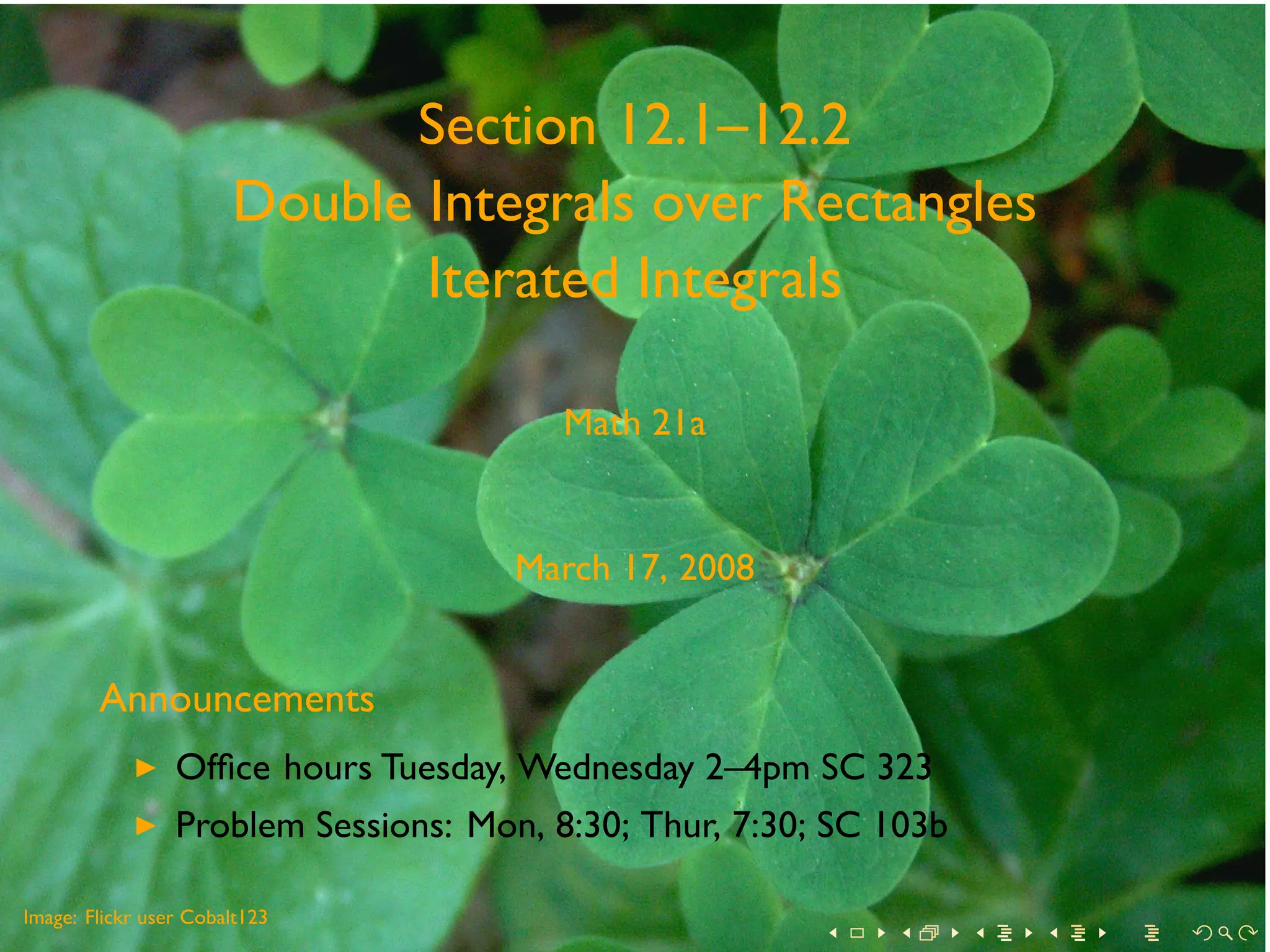Embed presentation
Downloaded 134 times





























The document covers double integrals over rectangles, starting with definitions and concepts like Riemann sums and iterated integrals. It discusses methods for calculating the volume under surfaces and the average value of functions over specific regions using Fubini's theorem. Several worksheets are included to practice applying these concepts to problems involving definite integrals and approximations.



























